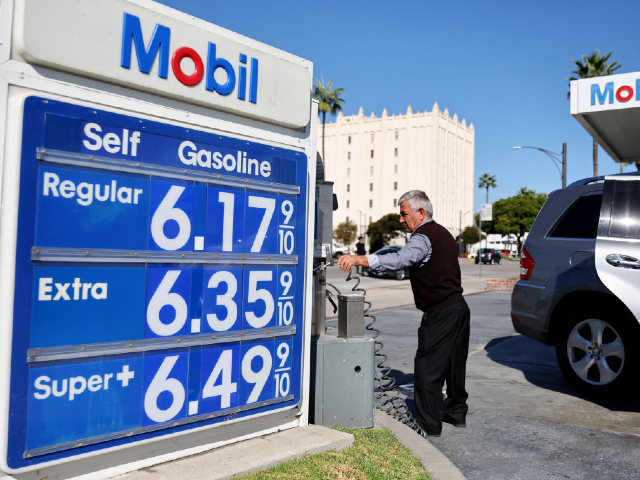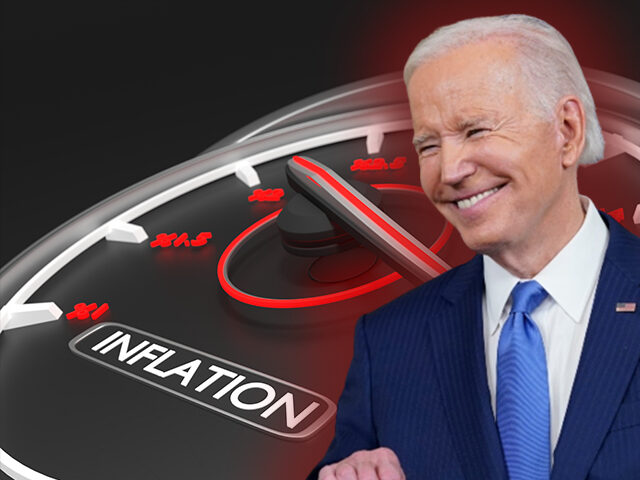You might want to prepare yourself for yet another inflation victory jig from President Joe Biden.
By our count, Biden has performed his inflation has been tamed dance routine at least four times—although one of those was so early we are not sure whether it should count. That first one came in July of 2021, just seven months into Biden’s presidency. “There’s nobody suggesting there’s unchecked inflation on the way — no serious economist,” Biden said at a press conference.
As inflation mounted its relentless assault on the U.S. economy, Biden managed to keep himself from celebrating victory for several months in a row. It was not until May of the following year that Biden declared the imminent defeat of soaring prices. Inflation was up 8.2 percent in the month prior. In the next month, we would learn that it was rising at an even faster 8.5 percent year-over-year rate in May and would climb to nine percent in June.
In September, Biden declared that inflation was up just “an inch”—perhaps the first time anyone has ever measured inflation in such a manner. A couple of weeks before Christmas, Biden declared that the one-tenth of a point month-to-month gain in the Consumer Price Index (CPI) was evidence that “my economic plan is working.”
The consensus forecast for the December CPI report is for headline prices to be flat compared with November. This would bring year-over-year inflation down to around 6.6 percent, the lowest since October of 2021. Core inflation—CPI minus food and energy—is expected to tick up to 0.3 percent month-to-month but to fall to 5.7 percent from six percent on an annual basis.
Gasoline prices will be a big driver of the decline in headline inflation. Prices fell 12.7 percent in December, according to AAA. This was largely due to a decline in expected global demand for petroleum products, including gasoline, as the global economy slips into one of the lowest periods of growth in years (not counting the pandemic lockdown). Broader energy prices likely declined by at least 4.5 percent. Bank of America’s analysts predict the report will show a 4.7 percent decline in energy prices.

Gas prices are displayed at a Mobil gas station on October 28, 2022, in Los Angeles, California. (Mario Tama/Getty Images)
Outside of energy prices, there was likely a sizable decline in goods prices. Used car prices are still falling, as new cars become more available and the market takes back some of that incredible price surge over the prior two years. A weaker-than-expected holiday shopping season probably dragged down prices of durable goods and apparel, as retailers resorted to deeper-than-usual discounts to clear inventories. We take our signal on weakening demand for manufactured goods from regional Federal Reserve banks and purchasing manager surveys from the Institute for Supply Management and S&P Global. The Department of Commerce said on Friday that factory orders decreased by 1.8 percent in November compared with the prior month, and October orders were revised down from an increase of one percent to just 0.4 percent.
The Institute for Supply Management’s December services sector PMI survey fell into contraction territory, dropping just below the 50 threshold that separates a shrinking services economy from a growing one. This was driven by a significant and very unexpected drop in new orders. With an economy that is supposedly rotating back toward services spending and still adding to payrolls at a swift pace, this is hard to explain. In any case, it will likely weigh on services side inflation.
That said, food inflation is likely to remain elevated. And core services excluding housing, a key metric watched by Fed officials, will probably prove stickier than the goods side of the economy. Even here, however, the softer-than-expected wage numbers for December could push down on services inflation since wages make up most of the cost of providing services.
All of this may be enough to push the headline figure negative. If that’s the case, the market will probably experience another bout of disinflation euphoria. Fed officials, however, are unlikely to see even a reversal in prices in December as a game changer. A zero or negative headline will likely pave the path for a 25-basis point hike at the end of the month but not significantly alter the expectations of officials that they will hike enough to bring the target above five percent this year. So, the pace may slow, but the destination will remain the same.
Soaring stocks and falling inflation, however, will like be an irresistible melody to a Biden administration ready to dance to the death of inflation for a fifth time.

COMMENTS
Please let us know if you're having issues with commenting.